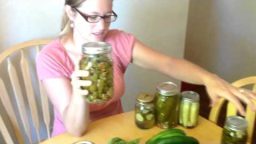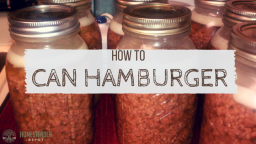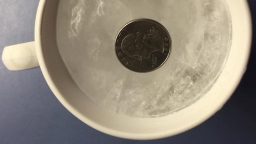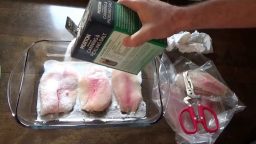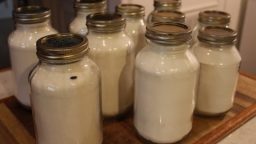Dehydrating is a great option for preserving food for the long term, especially for gardeners or homesteaders. But even if you’re just an urban homesteader, it might be an excellent way to get started with food preservation. If you like to shop sales, frequent farmer’s markets, or grow veggies or herbs in your own little urban homestead, dehydrating is a great way to maximize your finds and easily store food for the long term.
Here are some of the benefits to dehydrating vs. other food preservation methods:
- it preserves the nutritional content of food
- it condenses food and also makes it very lightweight, which is great for storage
- it requires very little work to do
- you can preserve a wide variety of foods with the same process
Getting started
To get started, you will most likely want to purchase a dehydrator, but you can also dehydrate food using your oven. You simply put your oven on its lowest setting, crack the door, and let your food dehydrate for 6-24 hours, depending on what you are dehydrating.
There are many dehydrators on the market, that range in size and efficiency. You will want to consider how much food you want to dehydrate at once, the storage space you have for it in your kitchen, how well-reviewed the model you’re looking at is, etc.
What to dehydrate
Once you have purchased a dehydrator, the sky is the limit on what you can dehydrate! You’d be surprised how much you can do with a dehydrator, from making jerky and pemmican to quickly rising dough and, of course, drying fruits, vegetables, and herbs. While there are many foods you can dry, here are some of the most popular and efficient foods to store by dehydration.
- Apples
- Oranges
- Bananas
- Berries
- Fruit leather
- Tomato sauce
- Herbs
- Peppers
- Meat (for jerky)
- Eggs (for powdered eggs)
Most dehydrators will have a guide for what temperature to set for which type of food product you are drying, but you might need to adjust accordingly since not every food product will have the same level of moisture. Typically, you will dry stuff for a long period of time, from 6-24 and maybe even 48 hours.
This long drying time doesn’t require much at all, all you need to do is process what you’re drying and lay it out in an even, thin layer on the trays of your dehydrator. You’ll want to check occasionally to see what kind of progress is being made. Most commonly, people will set their dehydrator up in the evening and dry overnight.
Dehydrating is an age-old method of drying food that you might find becomes a staple method of food production and food preservation in your home. Just give it a try and see how you like it!
